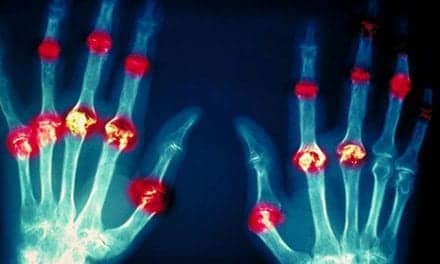Severe acromio-clavicular (AC) joint dislocation is often treated with surgery. However, a new study suggests that patients who opt to undergo nonsurgical treatment may experience fewer complications and return to work sooner.
The study was published recently in the Journal of Orthopaedic Trauma, according to a media release from St Michael’s Hospital.
The AC joint is located at the top of the shoulder between the collarbone and the top of the shoulder blade. Injuries to this joint commonly occur during sports, but they could also be caused by car accidents or falls.
For minor AC joint dislocations, surgeons suggest patients wear a sling for a few weeks and undergo physiotherapy.
However, “For severe AC joint dislocations, surgery is the common practice, but there’s not much evidence to suggest this is actually the best treatment,” says study author Michael McKee, MD, an orthopedic surgeon with St. Michael’s Hospital, in the release.
To look at this further, McKee assigned 83 patients with moderate to severe AC joint dislocations to receive either surgery followed by rehabilitation or receive nonsurgical treatment with sling and rehabilitation.
The patients were followed at regular intervals for 2 years, with the research team tracking their complications, level of disability, and satisfaction with their shoulders’ appearance.
After 6 months, the researchers found no significant differences among the participants in both groups, the release explains.
“Three months after the initial injury, more than 75% of the patients who did not have AC joint surgical repair were able to return to work, whereas only 43% of those who underwent surgery were back at work,” McKee notes in the release.
Among the 40 surgical patients, seven experienced major complications such as a loose plate or a deep wound infections, and seven others experienced minor complications such as a minor infection or numbness at the incision point.
Among the 43 nonsurgical patients, there were two major complications. However, they were the result of repeat falls that further injured the AC joint, per the release.
Surgical patients were more satisfied with their shoulders’ appearance than the nonsurgical patients, according to the study.
After 1 year, 5% of the surgical patients reported dissatisfaction with the appearance of their shoulder, compared to 16% of the nonsurgical patients. After the second year, more than 21% of nonsurgical patients were dissatisfied, compared to 4% of those who underwent surgery.
“The main advantages of surgery are that the joint is put back in place and the shoulder appears more symmetrical and pleasing to the eye,” McKee states in the release. “The long-term implications of surgery for AC joint dislocation remain unclear when compared to nonoperative treatment.”
McKee cautions in the release that while satisfaction with appearance of the shoulder should be a consideration, surgeons should think twice before recommending surgery for an AC joint dislocation—regardless of the severity.
“Patients who forgo surgery return to work sooner, experience less disability during the first months after injury, and have fewer complications,” McKee concludes.
[Source(s): St Michael’s Hospital, Science Daily]





